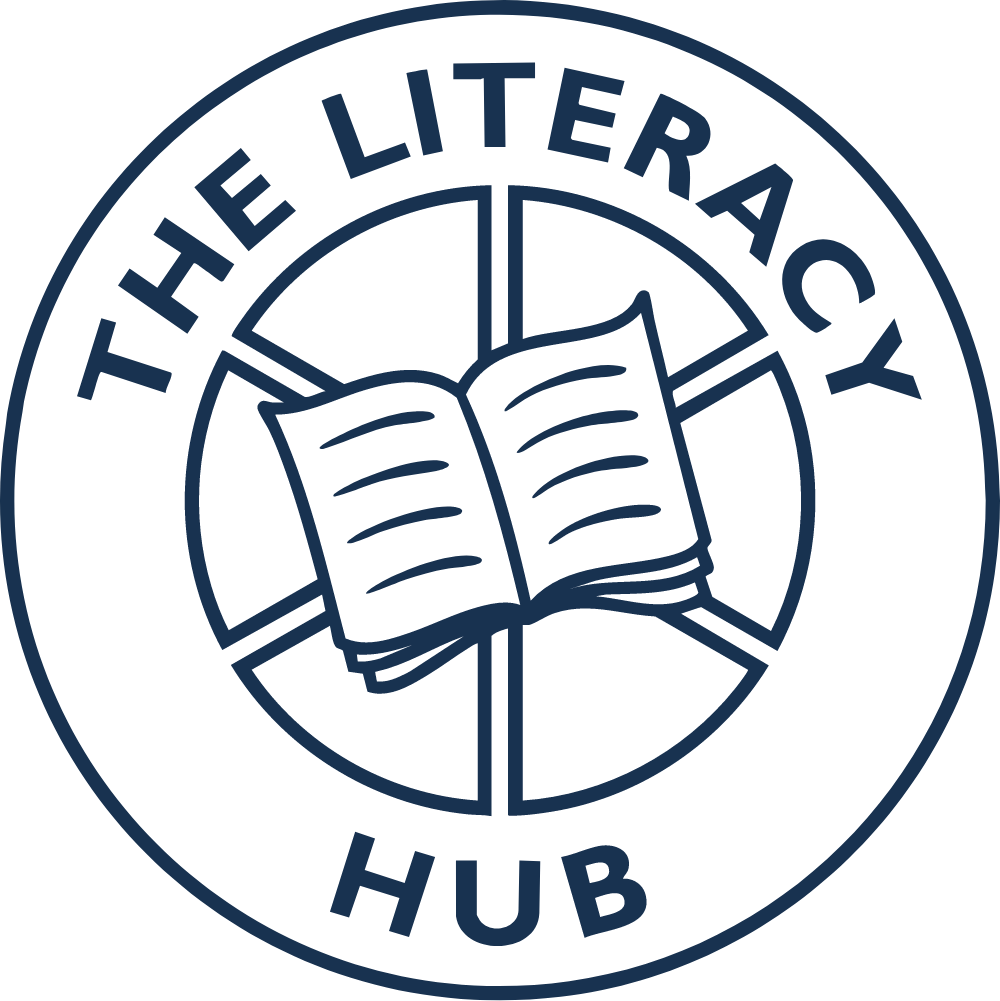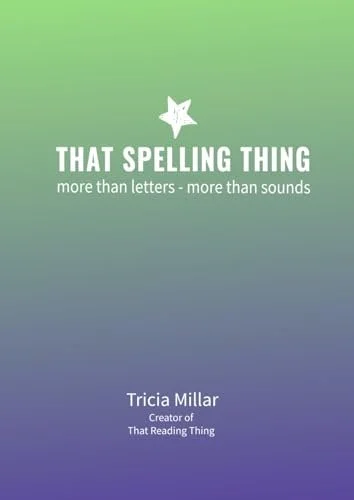That Spelling Thing
That Spelling Thing: More than letters, more than sounds
by Tricia Millar
A down-to-earth guide to teaching spelling to older pupils and adults
What it’s about
Tricia Millar is the founder of That Reading Thing, a structured reading intervention programme. That Spelling Thing is an approach to spelling rather than a full programme, so teachers will need their own words and their own resources to make the most of this book.
At just 88-pages, it’s not a long read. Tricia Millar doesn’t waste words and gets straight to the key points.
After an introduction to the essentials of English spelling, the main part of the book is about teaching students to use a ‘script’ or ‘prompt’, which is a learned, systematic approach to spelling words. Essentially, the ‘script’ encourages students to count the syllables in a word, then take one syllable at a time and say the sounds as they write them grapheme-by-grapheme. When the teacher first introduces a word, the spelling is presented as a ‘puzzle’. The graphemes are on puzzle pieces that have to be placed in the correct order by the student, as they use the ‘script’ to guide them.
Students often struggle to choose the correct grapheme for a sound. For example, is it <ee> <ea> or <y> for the /ē/ sound in bossy?). In That Spelling Thing, students are taught to choose the correct grapheme using basic morphology, or by ‘bundling’ the word with other words that share the same spelling, or using a ‘spelling voice’. Spelling patterns are also mentioned.
The best bit
What I really like about this book its practicality. It’s clear that the author has lots of experience working with struggling readers and spellers, as well as those who teach them.
Rather than focusing on the nitty-gritty of accurate linguistic analysis, Tricia Millar is happy to accept different ways of breaking words into syllables, and she emphasises using ‘everyday morphology’ rather than obscure roots. In addition, she doesn’t use syllable types (hooray!), and she gives practical advice about how to accommodate different accents. The emphasis is always on giving the student strategies that will help them to spell independently by thinking systematically about the syllables, sounds, and (to some extent) the meanings of words.
Something to think about
Tricia Millar is quite cautious in how much she advocates using morphology and etymology.
For morphology:
“In a nutshell, nudge for meaning, but don’t analyse so far that the added information requires more memory than just remembering a double letter.” (p. 73)
For etymology:
“Use the history of a word when it’s useful for remembering a tricky bit and for making obvious connections for increasing vocabulary. An historical perspective can sometimes help to explain why words sound the same but look different, but it can also just pile on a lot of extra details to remember … ‘telling stories about words’, even ones that give us great joy, is likely to overwhelm a student with a learning difficulty… By all means, have a look at etymonline.com or Wiktionary.com, but use your wisdom about how helpful the information will be to your students.” (p.74)
In general, I agree with this position – it is certainly possible to get carried away by one’s own interest in words and pass on far more information than is useful for students. However, I think there are a lot of students who benefit from a fairly technical approach to spelling. They find it reassuring to know that there are explanations, even if they don’t remember them all. If you (and your students) can represent information systematically, for example using word sums or morphological matrices, it is a quick route to understanding the connections between words, and it encourages a systematic approach to word analysis.
In addition, I’ve found that students are curious – once they realise that there is usually a reason for a particular spelling, they will ask questions. And if you can answer them, all the better. With limited intervention time, it can be too time-consuming to investigate individual words within lessons. This is why, within an intervention, I prefer to use a fairly structured approach, with ready-made resources and supporting etymological and morphological information on hand (see LIfTT). But I use a looser approach, more similar to That Spelling Thing, when dealing with individual spelling errors.
As Tricia Millar says, it is a question of using judgement. I think that some students will benefit from ‘word stories’ and ‘technical’ analysis of words, while others need a more sound- and syllable-based approach that is informed by ‘everyday morphology’.
Who is it for?
I would particularly recommend this book for non-specialist teachers of any subject who want to integrate spelling instruction into their classroom teaching, and to parents who want to help their children. That Spelling Thing is intended to benefit students who can already spell basic words, but ‘trip up’ on longer words.
For those who are doing spelling interventions, I’d recommend further reading for a more in-depth knowledge of why words are spelled as they are – for example, Uncovering the Logic of English (for spelling patterns), Spell It Out (for etymology) and Beneath the Surface of Words (for morphology).

